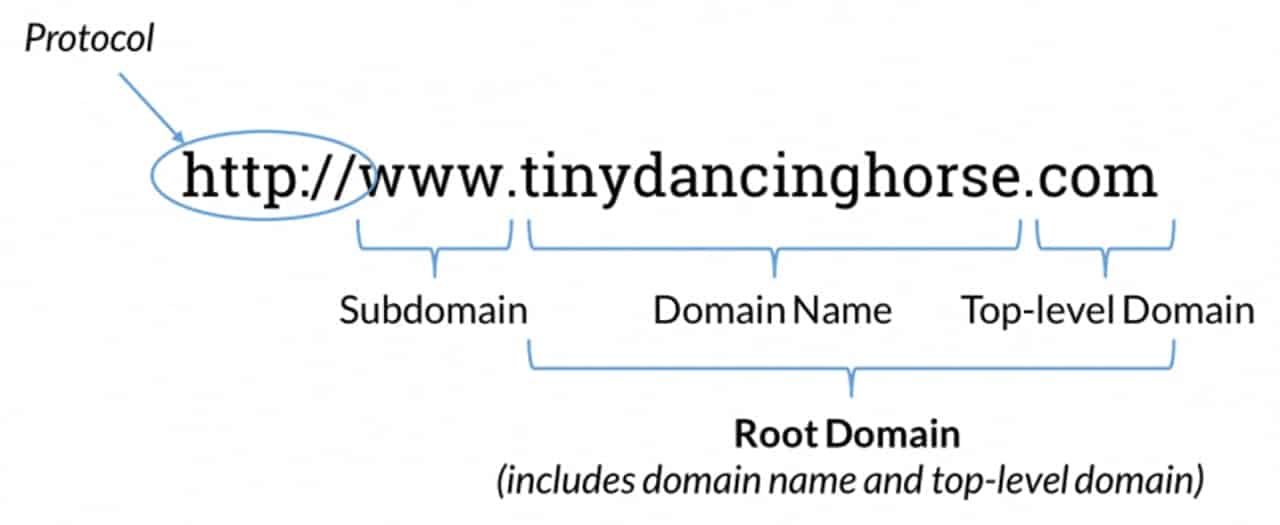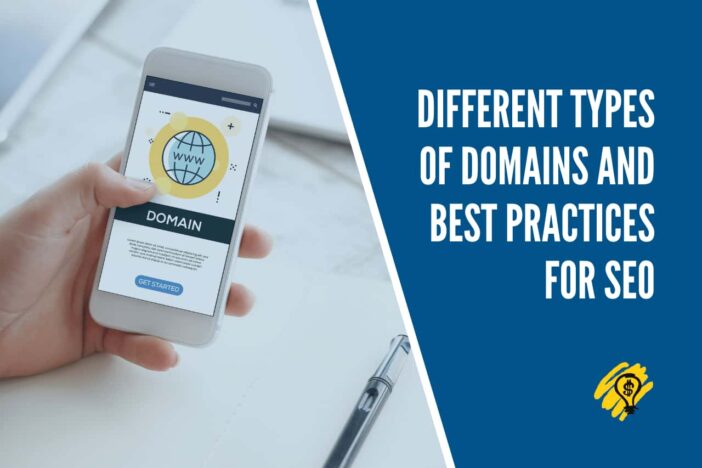The key to a successful website involves being on top of the search results. To do this, every website needs a unique name that people keep clicking on and exploring. But, what is a domain, and how do you get one? How should you use search engine optimization (SEO) and make it work with the URL?
This guide answers all. Let’s talk about domain definition and choosing a domain name for SEO.
Table of contents
The URL Breakdown
Domain names are a website’s distinctive and human-readable internet address. Each URL contains a TLD or extension (think of .com, .org, or .edu) and a domain name – together called the “Root Domain.” The subdomain is the “www,” which is ever-present but is increasingly optional when plugging in URLs.

Protocol
While the protocol is not part of the web address, it helps confirm a link between two areas on a network, allowing the internet to function.
Root Domain (RD)
The RD refers to the website’s highest page in the hierarchy – usually the home or landing page.
Top-Level Domain (TLD)
The TLD refers to the extension after the webpage name. This can be field-specific (.book, .gov) or country-specific (.fr, .in)
Domain Name
A domain name is a platform’s unique web address. Search engines use keywords in the address to rank it.
Subdomain
Subdomains can be used to create additional pages and organize a website.
What to Know About SEO
SEO makes a website’s content more reachable to a broader audience by optimizing what search engines are looking for so they can rank each site better. Google is currently the most dominant search engine, so most SEO revolves around optimizing content according to Google’s preferences.
Why would one want to get ranked higher by these searches? Well, the top 3-5 websites appearing after a search are the most likely to get clicked on and explored. After all, no one checks page 2 of the results.
Increased click-through rates eventually establish the web page as a reputable authority in the field, automatically boosting its searchability. All of the elements are connected to each other, and the profit is worth the investment in domain name SEO and the few minutes it takes to create SEO-friendly web pages.
Best Practices for Domain Name SEO
1. Make it Memorable
Think about the websites most people remember off the top of their heads – why are they memorable? These web pages fall into one of two categories- either extremely simple or somewhat unique. The simple ones may be short since most people do not have the time to spell out a phrase correctly, but it’s also important that the name is easy to remember.
Choosing a unique name is advisable so that the platform does not get mixed up with someone else’s. The most memorable platform names:
- Contain less than 75 characters;
- Avoid numbers and misspellings.
But what if the brand name is spelled differently in other countries? Adding a country-specific TLD (co.uk, or .dk) could ground people to the correct location and bump up location-specific spellings. Alternatively, playing around with the webpage name until it’s unique enough can ensure it appears high in searches despite misspellings.
An accessible and easy-to-read URL will contribute to a better user experience, keeping them coming back and telling their friends about their experience.
2. Avoid non “.com” TLD
Yes, this sounds contrary to the last point, but country-specific TLDs are the only exception to this rule. There’s currently a significant bias in directing traffic towards “.com” URLs trailed by “.net.” Most other TLDs are rarely used; unless it’s the only webpage of its kind, it will receive substantially low traffic. Rarer or overly unique sites are also more prone to getting on the spam list – web owners want to avoid this as much as possible.
3. Avoid hyphens
Speaking of spam lists, having a hyphenated web page name strongly correlates with spammy websites. That said, if it’s an absolute requirement, stick to one hyphen and make sure the name as a whole is very memorable.
4. Don’t Worry About the Website’s Age
There’s a common misconception that older websites are more search engine friendly than newer ones. The name registration must be accessible to Google, but it will not improve or hinder searchability. More established sites generally show higher search results due to our previous advice.
5. Avoid Changing the Name
Once there is an established customer base, people automatically attach the brand and page name to what it’s all about. There are plenty of reasons to require a web page name change, but the name change can affect SEO.
Conclusion
Creating search engine-friendly site names is more than simply using keywords. This guide has covered the industry’s go-to tips for SEO to boost a page’s searchability. It’s now up to website owners to explore what works for them and use search engine rankings in their favor.



